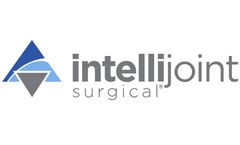Surgeon Controlled Navigation System Articles & Analysis
7 articles found
The aim of the project was to develop a Polish complementary system of molecular surgical navigation for the treatment of ...
Intellijoint Surgical is proud to announce a new, optional feature to the Intellijoint KNEE system. It helps provide quantitative measurements of femoral and tibial rotational alignment. ...
Computer-aided surgery is used in a daily clinical workflow for safer surgical interventions. Navigation systems work based on a tracking model, which helps in the correlation of a patient’s coordinates to the preoperative or intraoperative digital medical imagery. There are two main types of navigation systems available in the market today. They are the infrared (optical) systems and ...
The long-term success of dental implant surgery is dependent, in part, on accurate planning and placement of the implant.1 Currently, there are many digital planning systems available to aid the clinician in pre-operative treatment planning, although the main challenge with these planning systems is to accurately transfer the digital plan to the clinical situation. Most systems involve taking a ...
The following case was performed at the Pacific Dental Convention’s Live Surgical Stage held March 8th, 2018 in Vancouver, BC. The patient is a healthy 58 year old male with no known allergies or medical contra-indications to dental treatment. Patient presented with a Class III malocclusion for which he received both orthodontic and oral surgery consultations; however, he was not ...
INTRODUCTION The goal of the implant surgeon is to place the implant in the ideal position, to support the prosthesis for the best long term prognosis, while managing important anatomical landmarks. With the aid of Cone Beam CT scans the implant surgeon is able to evaluate, in three dimension, the ridge, important anatomy, as well as pre-plan implant placement in the most ideal position. ...
Summary: In treating brain cancers, neurosurgeons face a critical decision: remove too little tissue and risk fatal recurrences or remove too much and cause profound neurological damage. Presently, they rely on pre-operative surgical navigation technologies, such as MRI, in order to determine the contours of the cancerous tissue to be safely removed. These surgical navigation systems, in ...





